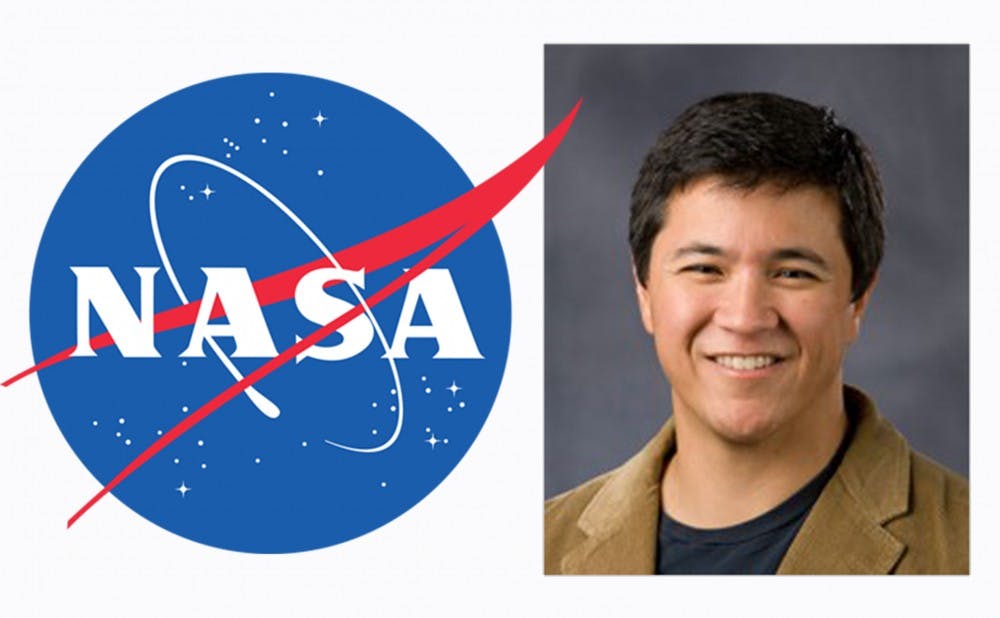NASA has awarded a Duke professor a three-year, $1 million grant to develop an early warning system for malaria in Peru.
William Pan, assistant professor of global environmental health at the Duke Global Health Institute, will use satellite data from NASA to help health officials pinpoint where to deploy resources and what resources to deploy during a disease outbreak. Although the early-warning system was developed to address malaria, it can potentially be applied to other vector-borne diseases such as dengue and the Zika virus, Pan said.
“NASA is very interested in proving that all of the investments they’ve put into satellite imagery are actually useful,” Pan said. “It’s used a lot for air quality, hydrology, water balance and all sorts of things. Vector-borne diseases are an emerging area, and they’ve realized it’s an important area.”
The existing malaria surveillance system in Peru is a time series model that does not provide region-specific data, Pan explained. All health reports go to a central surveillance system, which uses the data to monitor the occurrence of the disease over time. When a certain threshold is passed, the system sounds an alarm, and the health care system can deploy extra resources to contain the outbreak. This system proved inefficient at handling the outbreaks that followed record flooding of the Amazon River basin in 2012.
“The problem is they didn’t always know where to go,” Pan said. “They were guessing where they should be deploying resources. A lot of the times they had good guesses, a lot of the times they had bad guesses.”
The early warning system being developed by Pan will use multiple, region-specific time series to first identify malaria outbreak zones.
“Each region will essentially have its own time series, and we can detect when a particular region in a state will have counts that go above a threshold,” he explained.
Once such zones are identified, the system would use NASA satellite data to measure factors like climate, land cover and population density. These factors could then be used to simulate how people, the environment and mosquitoes might be interacting within that region. Such a simulation would help the health care system more strategically determine where to deploy their resources, Pan said.
Pan said he hopes to see the early warning system implemented sometime within the next five to 10 years. However, he noted that there may be logistical challenges to implementing the system in malaria-stricken countries.
“Whenever you have an early-warning system, one of the biggest problems is getting institutional capacity to sustain it,” he explained. “The existing system doesn’t require a lot of training or health centers, just entering case numbers into a data set. In our case, we’re going to be adding in things like climate and land cover and population density, and that just means a little bit more management that’s required locally to do this.”
Although the project is being developed specifically to treat malaria, it is a prototype that could be applied to different vector-borne diseases. Pan explained that he hopes to prove that his system can be applied to diseases like dengue and the Zika virus.
The containment of outbreaks of vector-borne diseases is an important area of global health study today, and the grant from NASA—rarely awarded to global health research—will allow Pan to continue developing his warning system technology.
“It is a little bit unusual for NASA to fund global health research,” said Randall Kramer, deputy director of the Duke Global Health Institute. “But I think this particular project makes perfect sense for them to do so, in terms of applications of some of their satellite data.”
Kramer added that collaboration on the development of Pan’s system will strengthen connections between Duke and academic, governmental and non-governmental institutions in Peru, Ecuador and Brazil.
“We’re always pleased when our faculty are able to obtain funding from important national organizations like this,” Kramer said. “More than anything, it reflects very well on Dr. Pan and his colleagues and will likely provide opportunities for students at DGHI and the Nicholas School of the Environment to get involved in this really important research endeavor.”
Get The Chronicle straight to your inbox
Signup for our weekly newsletter. Cancel at any time.

